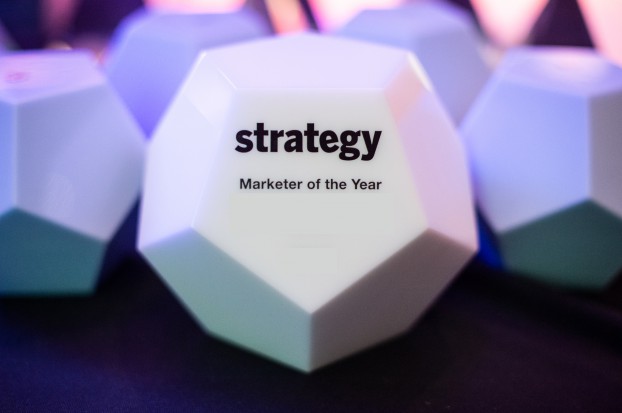So you’re a u.s.-based multinational planning to set up shop in Canada. What do you need to know?
Well, consider this, for a start: The u.s. constitution celebrates life, liberty and the pursuit of happiness; Canada’s constitution extols peace, order and good government.
That, says Edward Gould, managing partner of Toronto-based National Public Relations, neatly sums up the contrast between these two countries.
‘There are very profound differences,’ says Gould, whose agency counts u.s.-based retail giant Wal-Mart among its clients. While Canadians and Americans share many similarities with respect to language and culture, their fundamental values are sometimes profoundly dissimilar.
For pr agencies that work with u.s. multinationals in the Canadian marketplace, one of the biggest day-to-day challenges can be interpreting those values to their clients.
Obviously, Canada has its own distinct political system, laws and geography. But Canadians also have very different attitudes on many issues – not least with regard to multinationals, Gould says.
‘Canadians do not embrace success as readily as Americans,’ he explains. As a rule, there’s much more of a ‘prove it’ mind-set north of the border.
‘Canadians are not against multinationals per se,’ says Bruce MacLellan, president of Toronto-based Environics Communications, which works with global clients such as Xerox, 3Com, Johnson & Johnson and Toshiba. ‘It’s more the behavior and actions of that company.’
According to MacLellan, a potent demonstration of the different value systems that prevail in the two countries is the fact that the first unionized Starbucks, Wal-Mart and McDonald’s outlets were all established in Canada.
Labor legislation is much more supportive of unions here than in the u.s. – and that, MacLellan says, stems from a value system that venerates fairness above all.
‘It was Canada that produced [child labor activist] Craig Kielburger,’ he says. ‘He’s an example of how Canada is different.’
u.s. multinationals need to pay attention to examples like these, MacLellan says. Those that assume Canadians and Americans to be identical in values, and that build their communications strategies on that basis, are more than likely to run into trouble.
Research is key to understanding the differences between the two cultures. MacLellan says Environics has a wealth of data contradicting the assumption that Canadians are just ‘decaffeinated Americans’ – data suggesting that Canadians are, for example, more tolerant, more committed to the equality of women and more interested in environmental protection.
A case in point? This survey question was posed to both Canadians and Americans: ‘Agree or disagree: The father of the family must be master in his house.’ In Canada, fully 80% of those polled disagreed. In the u.s., by contrast, only 55% disagreed. ‘That’s a sizable difference,’ MacLellan says.
Jane Langdon, president of Toronto-based Langdon Starr Ketchum, says that her firm relied heavily on attitudinal research to help u.s.-based home and hardware chain Home Depot figure out the best communications approach to take when it entered the Canadian marketplace three years ago.
Langdon recommends that any u.s. firm do its homework carefully before setting up shop on Canadian soil. And that means paying attention not only to the differences between the two countries, but also to those between the various regions across Canada. ‘Listen to your community,’ she says.
That’s one lesson former Langdon Starr Ketchum client Starbucks learned the hard way when it moved into the Toronto area in 1996.
The ubiquitous u.s.- based coffee chain expected the same warm reception it had been receiving in Vancouver for the previous decade. But the company sparked animosity early on, when it tried to displace a café with a loyal local following to make way for one of its own outlets. A little research on the community at the outset could have prevented a lot of bad press.
So now you’ve done your homework, and you’re proceeding with your expansion plans into Canada. How do you make that all-important connection with Canadian consumers?
Put a local face on the company, says Carolyn Luke, vice-president of Goodman Communications in Toronto. ‘It’s one of the best ways to show your commitment to the country.’
Hiring local people, and getting involved in local community projects are key steps. Last summer, for example, Goodman helped client IBM Canada introduce audible traffic signals for visually impaired pedestrians, at the intersection near the Canadian National Institute for the Blind lab in Toronto.
‘I think it’s important [for u.s. companies] to position themselves as being part of the fabric of the community,’ says Christopher Bunting, chair and ceo of Toronto-based Shandwick Canada.
Canadians are more suspect of hard-core commercialism than their American counterparts, he explains, and will be more receptive to a company that tries to make itself relevant to them.
That’s not to say that the company’s senior executives in this market need to be Canadian. But they do need to be well-informed about Canadian issues, whether political or cultural.
Understanding the differences between the values of u.s. and Canadian consumers is only part of the challenge. u.s. multinationals also need to be aware that the media environment in this country is very different.
Obviously, the pure scope and breadth of media coverage in the American market – with its abundance of trade publications and specialized beat reporters – is much greater. But there’s also a considerable difference in the way stories are covered.
‘Canadian media are less accepting of commercial messages,’ says Bunting – a lesson that can be difficult to teach multinational clients.
‘They’ll show you something that’s on the front page of USA Today, or that Peter Jennings or Tom Brokaw talked about [on the nightly news], and we’ll think, ‘Wow. That’s not going to happen here.”
Also in this report:
– Who’s minding the corporate image?: Strategy profiles the Canadian PR agencies that help shape public opinion of seven leading global brands p.27
– Packaged goods PR requires different wrapping p.34
– Interactive PR can deliver measurable results p.35























